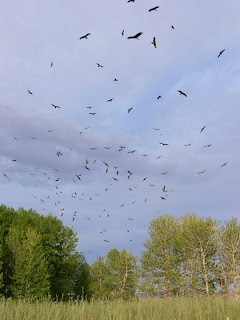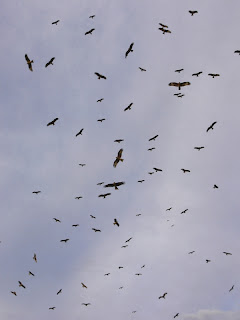Last week was characterized by strong winds, so typical for the Mongolian/ continental Asian spring season. Observations were difficult as always under such conditions, with many skulking birds giving frustrating views only. (skulking? Read some stuff about skulking/ wary/ inconspicuous/ secretive birds at Charlie’s Bird Blog.)

skulking Dusky Warbler. Photo © A. Braunlich
28 May: The little green area in front of Khovd University (where Mongolia’s first Eurasian Blackbird was found on May, 9th) proved to be good for a few minutes of early morning birding again: Besides a singing Common Rosefinch and a female Taiga Flycatcher I found the first Two-barred (Greenish) Warbler Phylloscopus (trochiloides) plumbeitarsus for Khovd since my arrival in October 2005. This taxon, breeding in Mongolia’s Khangai Mountains (less than 400 km east of Khovd) is apparently very rare west of the Khangai. For example, although recorded several times in Europe it hasn’t been found in Kazakhstan yet!
27 May: New for this spring was 1 Olive-backed Pipit, a very scarce passage migrant here, greatly outnumbered by Tree Pipits. Twites are still around in numbers, with 48 spotted today in the poplar plantations (last year I didn’t see them after March, 26th); 2 pairs of Oriental Turtle Dove, 220 Black-eared Kites at the roost.

Black-eared Kite. Photo © A. Braunlich

Black-eared Kite. Photo © A. Braunlich
26 May: 14 Spotted Flycatchers, 1 dark morph Booted Eagle (as always chased fiercely by Carrion Crows - which largely seem to ignore Black-eared Kites), and the first Barred Warbler this spring, together in the same bush with a Blyth’s Reed Warbler and a Booted Warbler.
23/24 May: Richard’s Pipits arrived in greater numbers, with 12 spotted at the river. A pair of Northern Raven breeding in town has almost fledged young by now.









































